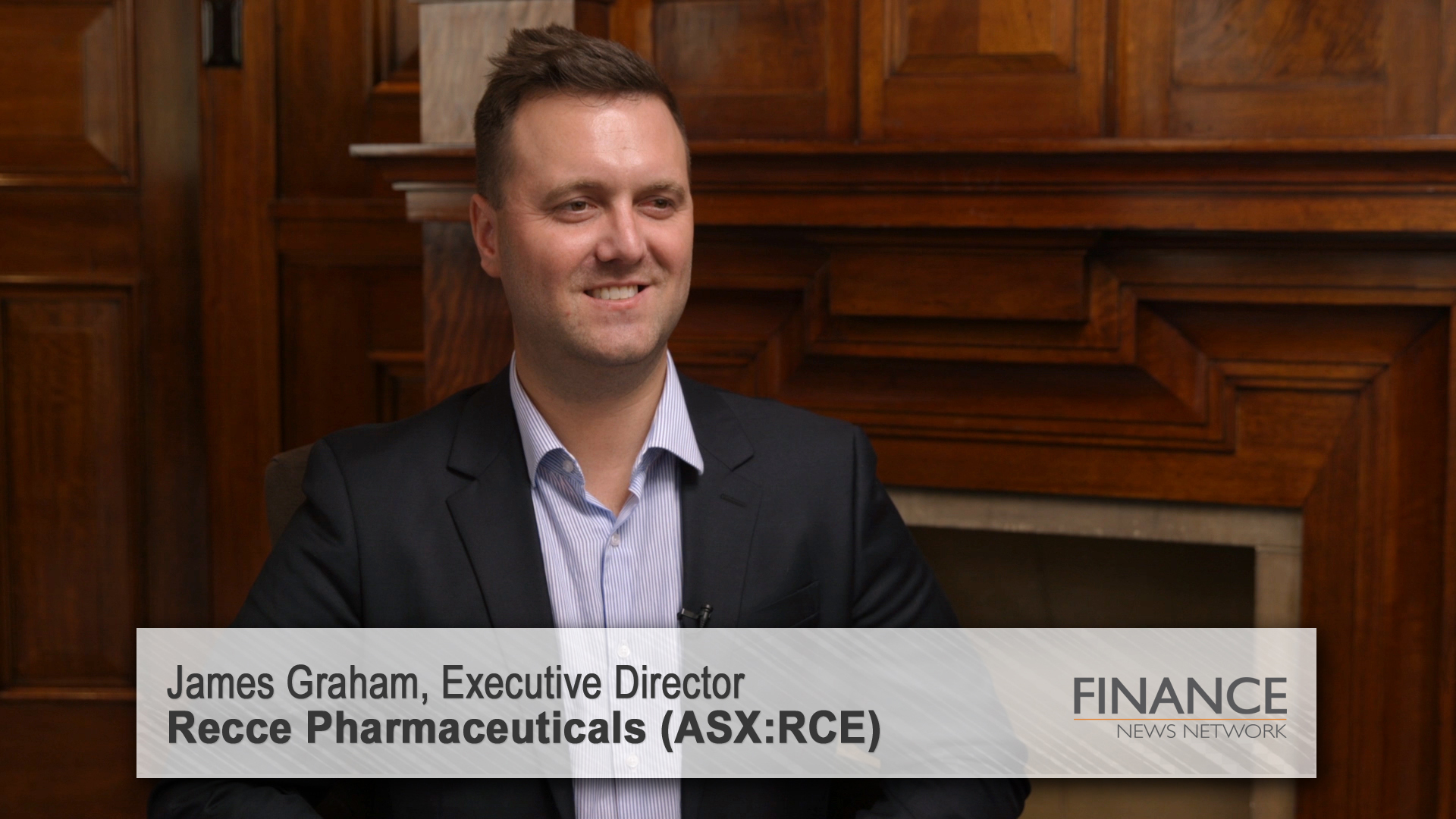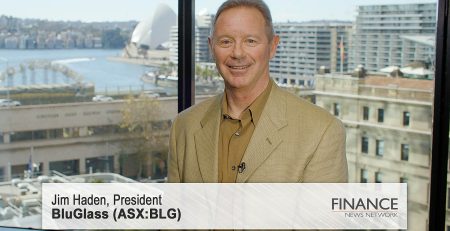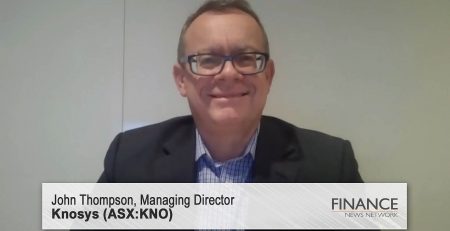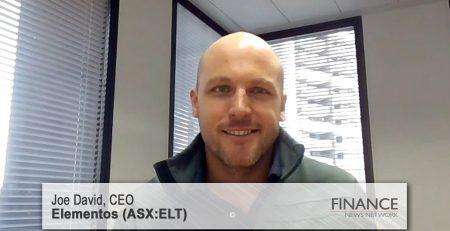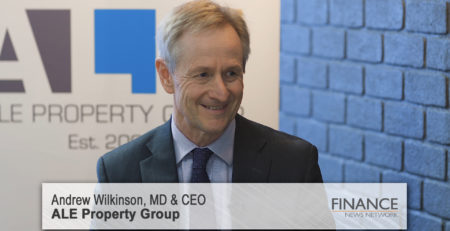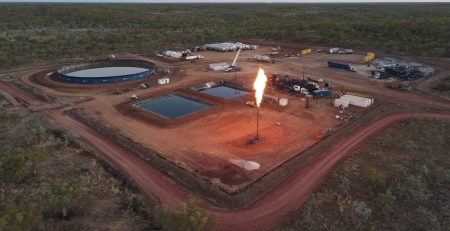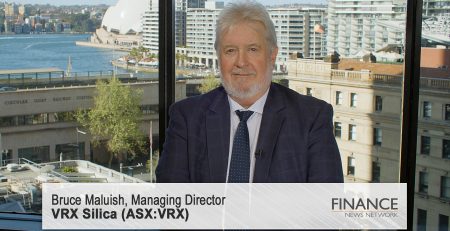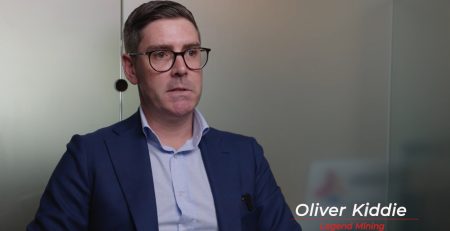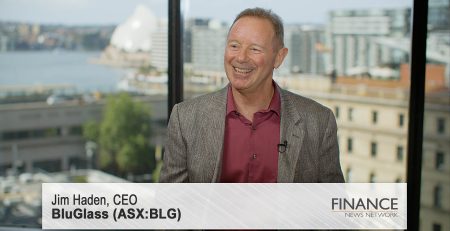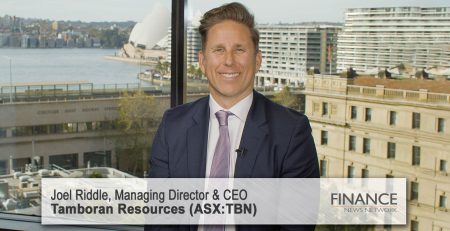Recce Pharmaceuticals (ASX:RCE) scales production
Recce Pharmaceuticals Limited (ASX:RCE) Executive Director, James Graham provides an update on the company's lead product RECCE 327, including its progress with manufacturing, securing patents and presenting to a global audience.
Anna Napoli: Hello. Anna Napoli for the Finance News Network, and joining me today at our investor event in Sydney is Executive Director of Recce Pharmaceuticals (ASX:RCE), James Graham. James, welcome to FNN.
James Graham: Hi, Anna.
Anna Napoli: Recce is pioneering synthetic antibiotics to target superbugs and sepsis. Can you give us an update?
James Graham: We've been advancing very quickly, particularly under the FDA QIDP designation, which is a legal designation awarded by the FDA. It gives us fast track regulatory review plus 10 years of market exclusivity post-approval. The data that I'm particularly pleased that we've recently received under that expedited status relates to our chemistry, the compound, manufacturing, reproducibility of and controls, really the quality assurance. That's according to not only a phase I/phase II scale of GMP manufacture grade, but it's ahead of phase one clinical trials.
Anna Napoli: Can you walk us through how your lead product candidate, RECCE 327, would address the problem of superbugs?
James Graham: Well firstly, this is the first new class in over 30 years. The FDA awarded a prestigious legal status, which allows expedited regulatory review plus 10 years of market exclusivity. The reason they've done that is this is the number one most expensive condition treated in hospitals, double the second most expensive. And where you have a patient population of 30 million people worldwide, growing at 8 to 13 per cent per annum, and a one in three death rate currently, you have a significant unmet medical need that needs to be addressed. So new classes of antibiotics, being RECCE 327, rely on a unique mechanism of action to overcome the bacterial mutation or superbug, but importantly, continue to work even with repeated use. We like to think the problem of superbugs could be a thing of the past.
Anna Napoli: And how is Recce going in terms of milestones with this product?
James Graham: It's going well. We have an expedited regulatory review with the FDA. So when we submit data, we promptly not only receive feedback, but additionally are informed what they'd like to see next. We recently submitted data which was at a fivefold increase to our previous manufacturing data pack, and not only did they reinforce the quality under GLP, good laboratory practice principles, but the GMP element of our manufacturing process, which puts us in a very good position and confident to reproducibly make the product ahead of phase one clinical trials.
Anna Napoli: James, the Australian government recently awarded $5 million to establish a superbug fund. Can you tell us a little bit more about that?
James Graham: Look, increasingly governments around the world are recognising the problem of superbugs and they're starting to act. So the Australian government recently awarded $5 million to establish a superbug hub. That hub is responsible for monitoring antibiotic use, advising on good antibiotic use practices, advising government on pricing and antibiotic policy, and importantly, advising industry partners, of which we are of that $5 million grant, of any superbug outbreaks occurring nationally. Under our Special Access Scheme Category A clearance in Australia, any superbug outbreak that a clinician is having challenge with, Recce is established, willing and able to take that problem on.
Anna Napoli: James, can you tell us about the status of your patent protection globally?
James Graham: We recently were granted yet another patent in Europe. That patent is part of our Family 2. Family 1, composition of matter, that covers our manufacturing and our curative. Family 2 is extending into the preventative, preventing infections ever taking place and expanding upon our dosing as a technology. We're not just a sepsis company or application.
Oral consumption for Helicobacter pylori and E coli, topical use for bacterial infections on the skin, nasal inhaler for tuberculosis. We are monopolising what I call a land grab in the polymeric antibiotic space, and we are further complementing that with a prestigious legal status awarded by the FDA. Patents can get challenged. Ours are granted out to November of 2035. No one's going to challenge the government 10 years of market exclusivity, starting only from the time of approval, so I think we're pretty well protected.
Anna Napoli: Given the solid status of your patent protection, what would the pathway to commercialisation look like for RECCE 327?
James Graham: We're right at the end of our preclinical studies. I would anticipate very, very soon some activity related to disclosures around anticipated phase one clinical trials, most likely here in Australia. All the time between here and there includes running in parallel our first in-human Special Access Scheme use. We have the head of Royal North Shore Department advising to our clinical trial committee. He's facilitating the Special Access Scheme process in Australia, and we're really advancing under what is effectively a business development opportunity to get access to these patients to help overcome their terrible bacterial burdens and the failures of existing antibiotics that they're sadly experiencing at this moment.
Anna Napoli: James, I understand you're going to be presenting at the World Superbug Conference in Washington, DC. Can you tell us a bit more about that?
James Graham: Recce has been invited to give the opening address at the World Superbug Congress. The opening address is the R&D address, and it is how Recce's synthetic antibiotics can change the antibiotic business model and lead to better patient outcomes, by way of not only curing superbugs that some patients unfortunately have, but preventing those infections ever taking place.
Anna Napoli: Final question now, James. Why should investors consider adding Recce to their portfolios?
James Graham: I added Recce. I bought $100,000 on market only a couple of months ago. I think if you want to be on the coalface of the clinical problem and seeking to be the biggest thing since penicillin, that layer of speculative high risk but great opportunity that Recce represents is really something I look forward to continuing to be a part of in the time ahead.
Anna Napoli: James Graham, Recce Pharmaceuticals (ASX:RCE), thank you so much for your time.
James Graham: Thanks, Anna.
Ends
Copyright 2019 – Finance News Network
Source: Finance News Network

